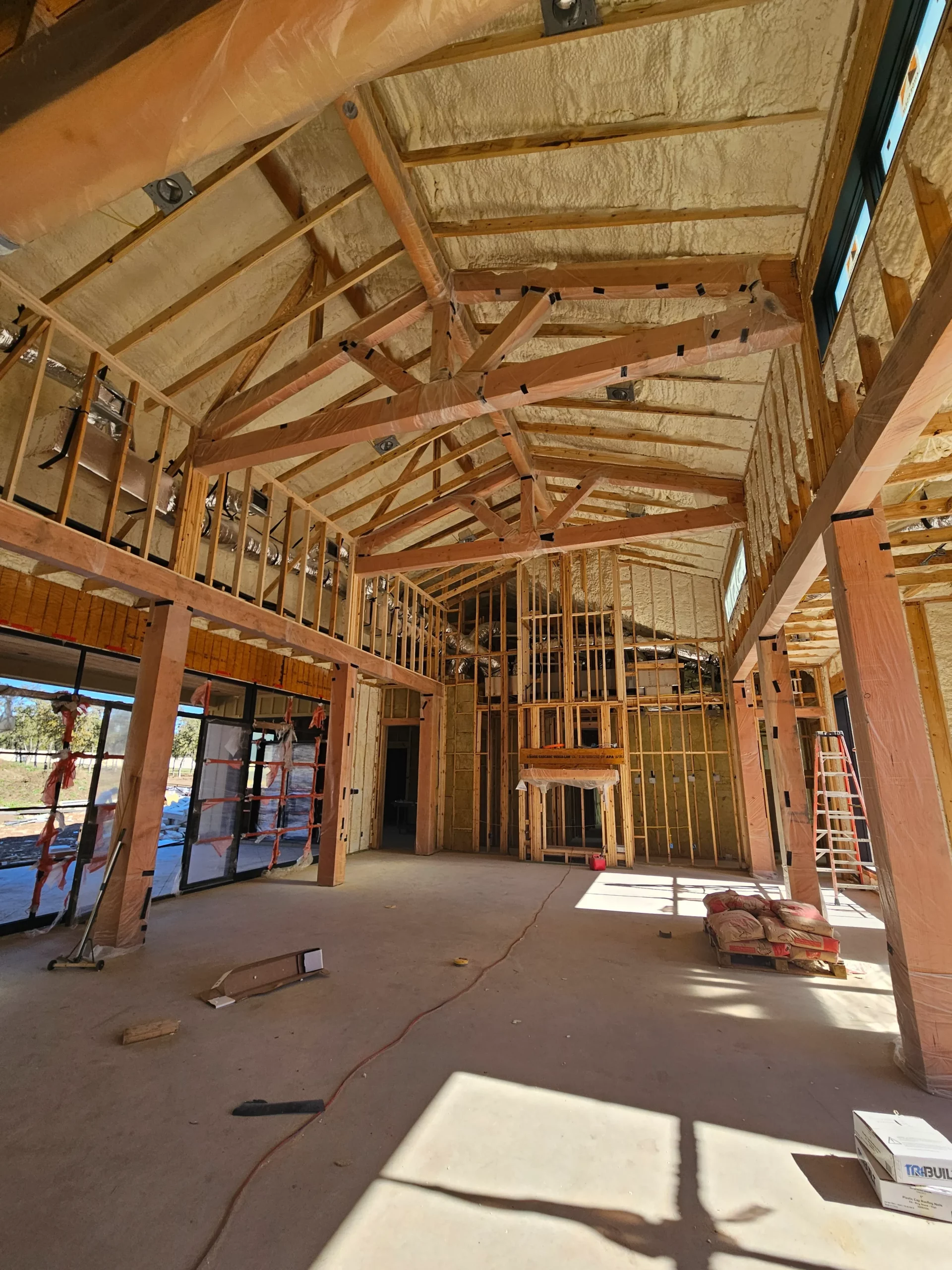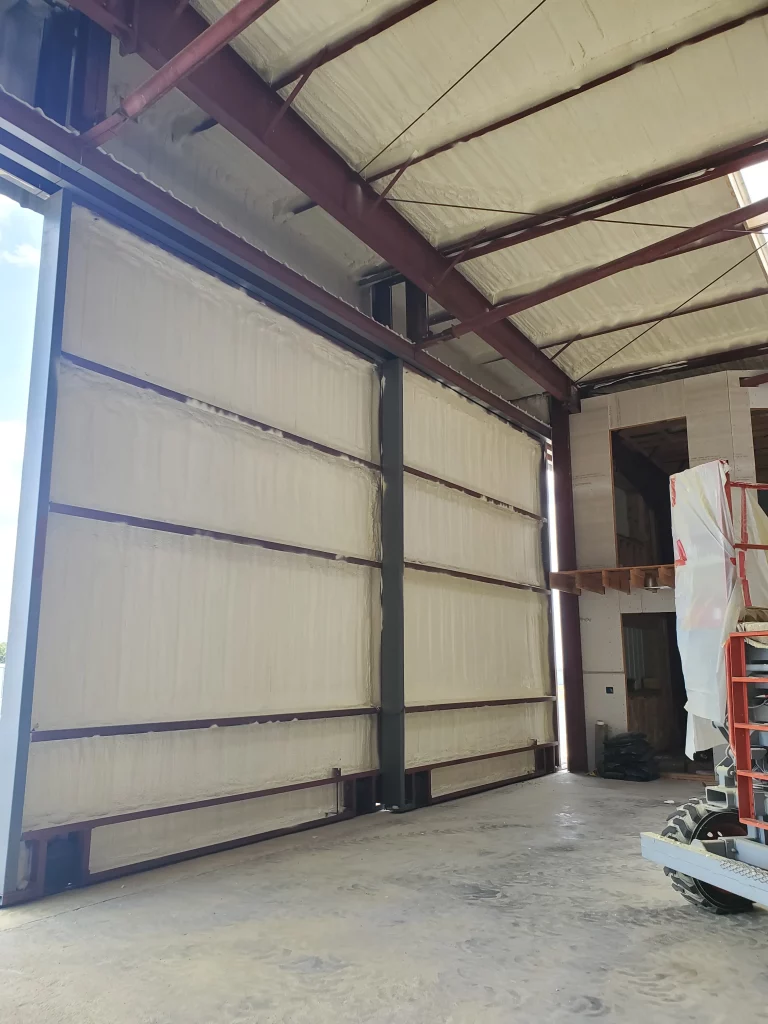
A proper insulation system stabilizes your home’s indoor environment by controlling temperature swings, blocking outside noise, and reducing structural shifts. In Lakeway, TX, where summers bring intense heat and humidity, these advantages become especially clear, as good insulation keeps walls and floors from expanding or contracting too much. This creates a steady feel inside, as if the house stands firm against weather changes. Homeowners notice fewer drafts and less creaking, which adds to that sense of solidity.
This article breaks down the ways insulation achieves this effect, with details on local climate impacts and practical steps. Information here draws from hands-on work with insulation installations across Texas homes, ensuring reliable guidance based on real results.
People sense a home as solid when it resists outside forces without constant adjustments. Temperature changes cause materials like wood and drywall to move slightly, leading to creaks or uneven temperatures. Insulation fills gaps and adds a buffer, so the structure holds steady.
In Lakeway, the area’s clay soils and variable weather amplify these shifts. Hot days followed by cool nights make uninsulated homes feel unsettled. A well-installed system absorbs these variations, keeping the interior calm.
Insulation Solution works by trapping air pockets that slow heat transfer. During Lakeway’s scorching summers, it blocks heat from entering, so rooms stay cooler without the AC running nonstop. This prevents walls from heating up and cooling down rapidly, which reduces that hollow or wobbly sensation.
Winters here stay mild, but chilly evenings can still cause condensation and minor settling. Proper insulation maintains even warmth, cutting down on moisture buildup that weakens structures over time.
Data from the U.S. Energy Information Administration shows Texas homes lose about 25% of energy through walls and attics without adequate insulation. Adding it cuts this loss, leading to a more consistent indoor climate.
Check attic insulation first; it’s often the weakest spot in Texas homes due to heat rising. Aim for at least R-30 coverage to handle local humidity.
Beyond temperature control, insulation also builds solidity by tackling another key element of comfort: sound. Outside sounds like traffic on Highway 71 or neighbor activities penetrate thin walls easily. Insulation absorbs sound waves, muffling noises so the home feels more enclosed and secure.
In dense Lakeway neighborhoods, this effect stands out. Homes with spray foam or fiberglass barriers report quieter interiors, as the material dampens vibrations that travel through frames.
A study by the National Institute of Building Sciences notes that adding insulation can reduce noise transmission by up to 50% in residential walls. This quiet stability contributes to the solid feel, as fewer disturbances interrupt the peace.
Beyond comfort, insulation protects the building materials. It limits exposure to extreme temperatures and moisture, which prevent warping or cracking in Lakeway’s climate.
For example, uninsulated attics bake in the sun, drying out roof trusses. Insulation shields them, extending the home’s lifespan and maintaining its firm foundation.
Market facts indicate that well-insulated homes in Texas retain value better; a report from the National Association of Home Builders states insulated properties sell for 5-7% more due to perceived quality.
Inspect crawl spaces under Lakeway homes regularly, as ground moisture rises. Sealing and insulating there stops dampness from softening floors.
Different materials affect how solid a home feels. The table below compares common types used in Texas, focusing on key benefits.
| Insulation Type | Temperature Control (R-Value per Inch) | Noise Reduction (STC Rating) | Durability in Humid Climate | Cost Range (per sq ft) |
|---|---|---|---|---|
| Fiberglass | 2.2-4.3 | 35-45 | Moderate | $0.30-$1.50 |
| Cellulose | 3.1-3.7 | 40-50 | Good | $0.60-$2.00 |
| Spray Foam | 3.5-7.0 | 45-55 | Excellent | $1.00-$3.00 |
| Rigid Foam | 3.8-5.0 | 30-40 | Good | $0.50-$2.50 |
This comparison highlights spray foam’s edge in humid areas like Lakeway, where it seals tightly and resists mold.

Assess your home’s current setup by checking energy bills and feeling for hot spots. Lakeway’s building codes require minimum R-values, so review local permits to ensure compliance.
Think about long-term costs: initial investment pays off in lower utilities, but factor in professional installation to avoid gaps.
Evaluate space constraints; attics and walls have limits, so choose materials that fit without compressing.
Consider environmental impact. Some insulations use recycled content, aligning with Texas’s push for efficiency.
Hire an energy audit before changes. Tools measure air leaks precisely, guiding where insulation adds the most solidity.
It helps by stabilizing temperatures but won’t stop major foundation issues from soil movement.
Quality installations seal entry points, reducing risks compared to loose-fill options.
Most types endure 20-50 years with proper care, depending on material and exposure.
Effects start right away for temperature and noise, often within days as the home adjusts. Full durability benefits show over months.
Yes, it cuts summer energy use more, which dominates bills here. Savings average 15-20% yearly per Texas A&M AgriLife Extension.
Most homes allow retrofits through attics or blown-in walls. Avoid disturbing asbestos in older Lakeway properties.
Aim for R-38 in attics and R-13 in walls to handle heat and humidity effectively.
It can lead to mold from moisture, affecting air quality. Proper systems prevent this by controlling humidity.
Insulation delivers solidity through steady temperatures, quiet spaces, and lasting protection. In Lakeway, it counters local heat and soil challenges directly.
Evaluate your home’s needs based on age, layout, and usage. Match choices to goals for comfort and efficiency over time.
Start by reviewing insulation levels in key areas like the attic and exterior walls. Contact Spray Foam Tech at (737) 777-9590 or oldworldtx@hotmail.com for an assessment tailored to Lakeway homes. This step ensures targeted improvements that enhance stability without excess work. Professionals guide selections based on your setup, leading to noticeable changes in how the house holds up daily. (78 words)